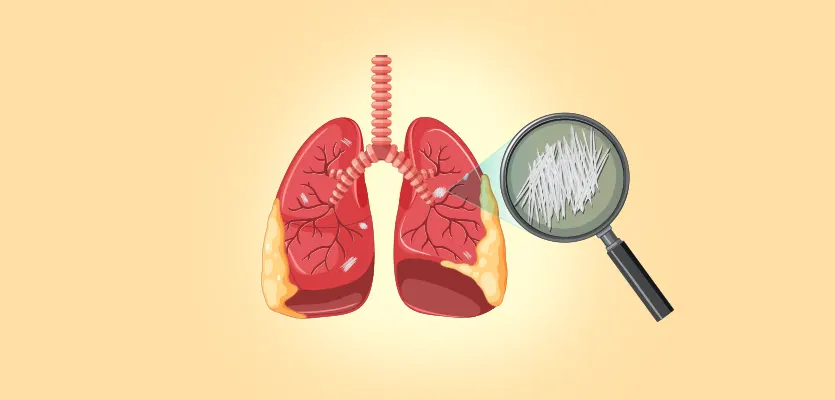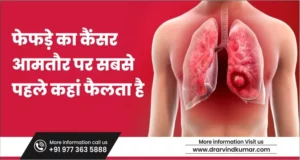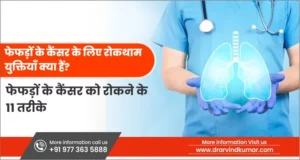The method and course of lung cancer treatment are among the most important decisions you would make in your cancer treatment journey. During this, your lung cancer care team stays by your side and makes sure you know about the different treatment options, their related side effects, and the expected results.
A cancer care team includes experts from multiple disciplines, like oncologists and surgeons.
They would suggest you the best treatment approaches based on the following factors:
- The location of your tumor
- The stage of cancer
- The areas affected by the tumor
- Your overall health
- The expected side effects and results
Based on the information and consultation, you can choose the treatment plan that suits you best.
This article follows a detailed account of the various lung cancer treatment options available in India. Read on to know about the same.
1. Surgery
Surgery has been and continues to be the standard treatment method for lung cancer. This procedure aims to remove the tumor and some nearby tissues to ensure you are free from all cancerous cells.
However, surgery is not the best option in every case. Your oncologist would prescribe surgery only when the tumor is localized to a certain part of the lung. Sometimes, a locally spread tumor can also be removed surgically, but this decision depends on the exact location and the degree of spread of the tumor.
Lung cancer surgery can be Open by Thoracotomy or minimally invasive (key-hole). A thoracotomy involves a long incision along the curve of the ribs and separation of the ribs by special instruments to be able to put your hands inside the chest to do the surgery. And a thoracoscopy (VATS) is a minimally invasive procedure involving one to four small incisions and the use of special instruments along with a tiny camera device. There is no long incision, no separation of ribs and no fear of fracture of ribs. Robot-assisted lung cancer surgery is available now in some advanced cancer care institutions in India, including Medanta hospital @ Gurugram.
Surgery is also often performed with chemotherapy and/or radiotherapy. These procedures can be performed before the surgery to shrink or kill a part of the tumor or after the surgery to kill any remaining cancerous cells and prevent the tumor from recurring.
Based on the part of the lung to be operated on, a surgeon performs one of the following procedures:
i. Lobectomy
Your lungs are made up of compartmentalized lobes. While your left lung has two lobes, the right one has three. If the tumor has involved only one lobe or two consecutive lobes in the case of the right lung, the surgeon performs a lobectomy or bilobectomy. It involves the removal of the affected lobe.
A bi-lobectomy is performed when the tumor has spread to the upper and middle or the middle and lower lobes of the right lung.
Your oncologist might suggest a sleeve lobectomy if a part of the main bronchus is affected. This involves the removal of one lobe and a part of the main bronchus. The healthy end of the bronchus is then connected to the unaffected lobe.
ii. Segmentectomy
Each lobe of your lung is further divided into 2 to 5 segments. If the tumor is limited to only one or a few segments, the surgeon removes only the affected segments instead of the whole lobe.
iii. Wedge Resection
In this surgery, the affected part of the lung is resected in the shape of a wedge. Here, the surgeon considers the area of spread of the tumor rather than the affected lobes or segments.
iv. Pneumonectomy
In this surgery, the surgeon removes one entire lung. This surgery is done when either the tumor has spread throughout the lung, or the tumor lies in the center of the lung.
2. Chemotherapy
Chemotherapy is also a popular and traditional treatment option for lung cancer. It involves the use of high-power medicines to stop the growth of cancerous cells and kill them.
Due to the choice of medicines, you must be in relatively good health to undergo regular chemotherapy treatment. These medications are mostly administered intravenously through an IV, and the session lasts up to a few hours. The treatment is performed in cycles of one to three weeks.
Chemotherapy can also be paired with surgery and/or radiation. In the initial stages, it is performed to shrink the tumor before surgery, and in progressive cases, this treatment helps limit its further spread and relieve the symptoms.
3. Radiotherapy
Radiotherapy is also a popular and traditional lung cancer treatment option in India. It involves high-intensity radiation, usually x-rays, to shrink or kill the tumor cells. This method also helps relieve cancer symptoms, like blockage of the bronchus, bleeding, and pain.
Proton therapy, a radiation therapy that uses proton beams, is also popular nowadays. It is known to be more effective and has fewer side effects.
Based on the intensity and the location of radiation supplied, radiotherapy is of the following types:
i. Intensity Modulated Radiation Therapy
Here, the radiation is supplied externally through a radiation device. The radiation intensity is adjustable so that the tumor receives the most of it.
ii. Brachytherapy
This is an internal radiotherapy method. A sealed radioactive material is placed inside or close to the tumor. The constant radiation from this material eventually kills the tumor cells.
iii. Stereotactic Ablative Radiotherapy (SABR)
In this method, very high doses of radiation are supplied to an accurate region of the tumor. This limits the exposure of the surrounding cells to radiation.
iv. Stereotactic Radiosurgery (SRS)
This is done when the tumor has spread to parts of the central nervous system, i.e., the brain or the spinal cord. Here, high doses of radiation are delivered to the CNS to limit the growth of the cancerous cells and kill them.
4. Targeted Therapy
As the name suggests, targeted therapy targets specific features of the cancerous cells to counter them. In this relatively new form of cancer treatment, the first step is molecular analysis or biomarker testing of a tumor cell sample.
Cancerous cells have certain features that make them different from normal cells.
Biomarker testing aims at finding those features. These factors include:
- ALK
- EGFR
- ROS-1
- NTRK
- MET
- RET
- BRAF V600E
If any of these factors is detected, it is called a positive biomarker test result. Based on this finding, the cancer care team follows a treatment plan that targets these factors to kill the tumor cells.
5. Supportive Care
Also called palliative care, this is a complementary treatment plan that goes along with the primary treatment. It involves treatment and therapy methods that help in relieving the symptoms of cancer and side effects of the primary treatment and improving your quality of life.
This involves medications for pain, nausea, and bleeding and therapies to relieve breathing difficulties and other symptoms. Sometimes, the doctor might also provide you with a portable small oxygen tank for ease of breathing.
Making The Decision
Before you come to a decision, it is essential that you have a thorough and open conversation with your cancer care team. Get to know the possible side effects and results of different treatments, their duration, and their expenses. This would help you figure out what would work best for you.
Dr. Arvind Kumar is among the best cancer care providers in India. Currently offering his services at Medanta Mediclinic in Delhi and Medanta Hospital in Gurgaon, he makes available the most advanced and reliable lung cancer treatment options to the patients.
Dr. Arvind Kumar has received his training from some of the most renowned healthcare institutions in the world and entails over 40 years of hands-on experience. He has also been awarded Dr. B. C. Roy National Award for his insurmountable expertise in providing the best care to his patients.
He and his team offer the only comprehensive A to Z lung cancer treatment program in India.

.webp)



